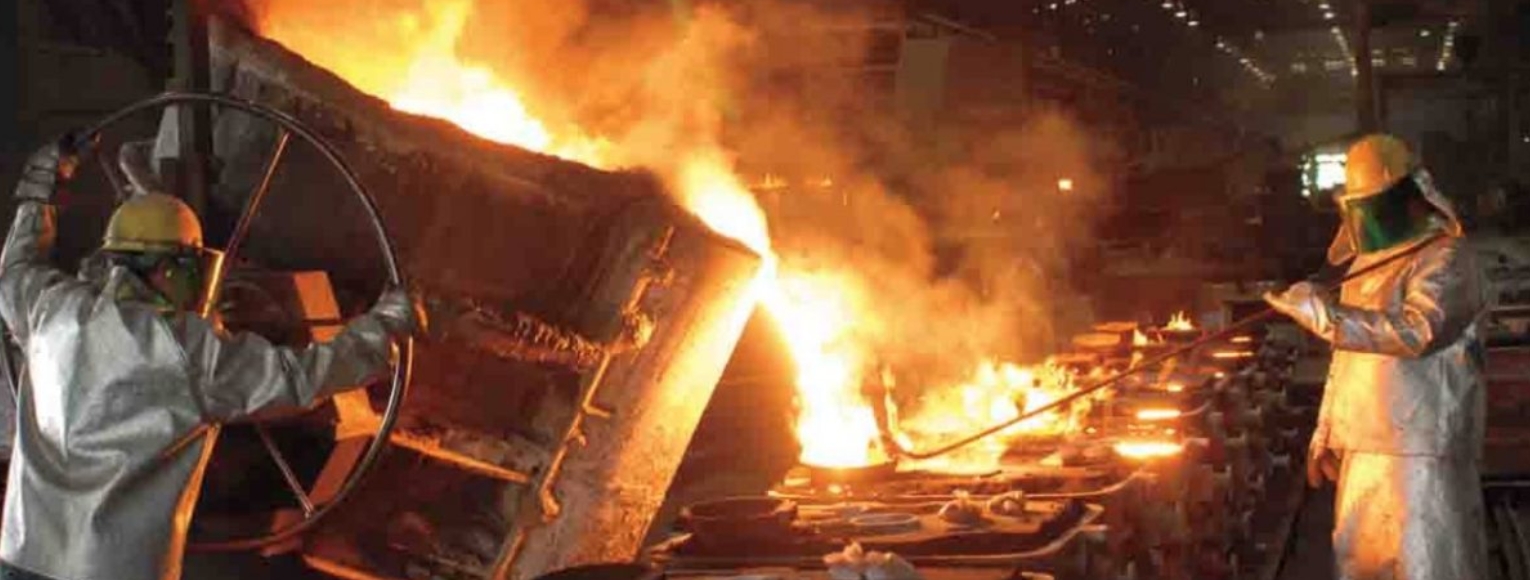Abstract
This paper focuses on the design and simulation optimization of the casting process for the upper half of a front bearing seat made of grey cast iron (HT-250). The bearing seat, an essential component in automotive and aerospace suspensions, requires high dimensional accuracy and surface quality to ensure the stability and durability of the suspension system. This study begins with an analysis of the structural characteristics of the bearing seat, followed by the design of the gating system, risers, and chillers. Using ProCAST software, the filling and solidification processes are simulated to identify and eliminate potential defects such as shrinkage porosity, hot tears, and porosity. Through iterative simulations, the gating system, risers, and chillers are optimized to produce defect-free castings. The optimized process ensures efficient metal flow, proper solidification sequence, and excellent casting quality.

1. Introduction
The front bearing seat is a crucial component in vehicle and aircraft suspensions, providing support and stability to the suspension system. The upper half of the bearing seat, which supports the bearing and wheel hub, undergoes significant loads during operation. Therefore, the casting process must produce a component with high dimensional accuracy, surface quality, and mechanical properties. Grey cast iron (HT-250) is chosen as the casting material due to its excellent machinability, good damping properties, and cost-effectiveness.
This study aims to optimize the casting process for the upper half of a front bearing seat by:
- Analyzing the structural characteristics of the bearing seat.
- Designing the gating system, risers, and chillers based on casting principles.
- Conducting numerical simulations to predict defects and optimize the casting process.
- Validating the optimized process through experimental casting trials.
2. Part Characteristics and Technical Requirements
The upper half of the front bearing seat is a complex component with a three-dimensional geometry. The casting has an outer dimension of 1085 mm x 810 mm x 380 mm and a net weight of 566 kg. The maximum wall thickness is 150 mm, while the minimum is 20 mm. The casting features intricate cavities, bosses, and thick sections that make the filling and solidification processes challenging.
The technical requirements for the casting include:
- No shrinkage porosity, hot tears, or gas porosity that could affect the mechanical properties or dimensional accuracy.
- Smooth surface finish to facilitate machining operations.
- Dimensional accuracy within specified tolerances.
3. Gating System Design
The gating system is designed to ensure smooth metal flow, avoid turbulence, and promote directional solidification. Two pouring positions are considered for the casting:
- Position 1 (Top Gating): The gating system is positioned at the top of the casting, allowing metal to flow downwards.
- Position 2 (Bottom Gating): The gating system is located at the bottom, allowing metal to flow upwards.
After simulation analysis, Position 2 is selected due to its ability to reduce turbulence, promote better filling, and facilitate defect elimination. The final gating system design, featuring a semi-closed bottom-pouring system with ratios ΣA_直:ΣA_横:ΣA_内 = 1:1.25:0.83.
4. Riser Design
Risers are designed to compensate for the shrinkage that occurs during solidification and prevent shrinkage porosity. The initial riser design, based on the casting’s modular analysis, includes four top risers. However, through simulation, it is determined that additional risers are required to eliminate hot spots and ensure complete feeding.
The optimized riser design includes six risers strategically placed to feed critical hot spots. The dimensions of each riser are determined using the modular method and refined through simulation.
5. Chiller Design
Chillers are used to promote directional solidification and eliminate defects in thick sections. The initial chiller design includes two chillers placed on the sides of the casting. However, simulation results indicate the need for additional chillers to control the solidification sequence and eliminate hot spots.
The optimized chiller design includes four chillers, strategically placed to accelerate cooling in thick sections and promote sequential solidification.
6. Simulation Analysis
The casting process is simulated using ProCAST software to predict defects and validate the design. The simulation parameters include:
- Pouring temperature: 1350 °C
- Mold temperature: 200 °C
- Metal flow rate: Calculated based on the gating system design
The simulation results for the initial and optimized designs are compared to identify and eliminate defects.
6.1 Initial Simulation Results
The initial simulation results show significant defects, primarily in the top and thick sections. The defects are attributed to turbulent flow, improper riser placement, and inadequate feeding.
6.2 Optimized Simulation Results
After optimizing the gating system, risers, and chillers, the simulation results show a significant reduction in defects. Most defects are now confined to the gating system, which does not affect the final casting quality.
7. Experimental Validation
The optimized casting process is experimentally validated through trial castings. The results confirm the simulation predictions, with minimal defects observed in the final castings. Non-destructive testing (NDT) methods such as radiographic testing and ultrasonic testing are used to verify the casting quality.
8. Conclusion
This study demonstrates the design and optimization of the casting process for the upper half of a front bearing seat made of grey cast iron (HT-250). Through structural analysis, gating system design, riser and chiller placement, and simulation optimization, the casting process is refined to produce defect-free castings. The optimized process ensures smooth metal flow, proper solidification sequence, and excellent casting quality. Experimental validation confirms the simulation predictions, demonstrating the effectiveness of the optimized casting process.
The key findings of this study are summarized in Table 1.
| Parameter | Initial Design | Optimized Design |
|---|---|---|
| Gating System | Semi-closed top-pouring system | Semi-closed bottom-pouring system |
| Number of Risers | 4 top risers | 6 risers strategically placed |
| Number of Chillers | 2 side chillers | 4 chillers strategically placed |
| Defects | Significant defects in top and thick sections | Minimal defects confined to gating system |
| Casting Quality | Poor | Excellent |
Table 1: Summary of Initial and Optimized Casting Process Parameters.
